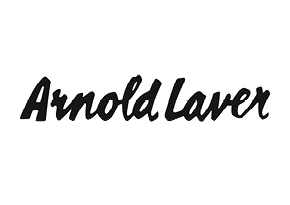26 September 2017
The Wonderful World of Plywood at London’s V&A

TRADA has long sung the praises of plywood, but an exhibition at the V&A promises to put this affordable, durable, attractive, and environmentally friendly wood product back in vogue.
The social history of plywood – as a pioneer in the furniture and transport industries, and as a maligned material – is currently explored at an exhibition at London’s V&A Museum.
Curated by Elizabeth Bisley and Christopher Wilk, Plywood: Material of the Modern World provides a fascinating insight into how this frequently overlooked material has helped shape the modern world.
From plywood’s industrial beginnings in the 1850s to present day, the exhibition uses 120 plywood objects in a timeline of the material's development and reputation.
Plywood is a simple engineered material with a long history that can be traced back to ancient Egypt, the making process of which is depicted on a carving at Thebes. Created by gluing wood veneers together, with the grain of each veneer running perpendicular to the next — known as cross-graining — plywood is stable, non-warping and stronger than solid wood.
The Porter Gallery, which houses the collection at the V&A, looks incongruous against Leonardo da Vinci's notebooks and Michelangelo’s sculptures on display at the nearby Renaissance gallery.
Plywood objects such as aeroplanes, canoes and boats hang from the ceiling and racing cars break out into the space of the main entrance, rubbing shoulders with a stack of hat boxes, surfboards and wall-mounted chairs.
The show is divided into three key landmarks in plywood’s production – the invention of the rotary veneer cutter in the early 19th century, the advent of moulding techniques which gave rise to now-iconic modern furniture designs, and a brave new world of modern digital technology and CNC-cutting techniques.
Exhibition highlights include the British de Havilland Mosquito – the highest-flying, fastest aircraft in World War II. Lighter, cheaper and more aerodynamic than any metal equivalent, this plywood phenomenon could outrun all enemy aircraft.
Ground-breaking pieces by Alvar Aalto, Marcel Breuer, and Charles and Ray Eames are also on display. Originally commissioned by the United States Navy to produce moulded plywood splints and stretchers, the Eames brothers used the skills they learned in wartime austerity to create plywood furniture. Their chairs, with their moulded plywood seats, have become synonymous with mid-century modernism.
Plywood (of a different form) is fashionable once again thanks to the development of cross-laminated timber, an engineered wood with thick laminations that allows architects to build taller than ever before without the need for steel or concrete.
"The exhibition offers a history of technology and of the uses of plywood, but also a history of a way the public perception and fluctuating reputation of a material can actually affect how it's used," says Curator, Christopher Wilk. "People have forgotten the remarkable way that plywood was used."
Plywood: Material of the Modern World is free at the Victoria and Albert Museum, Cromwell Rd, Knightsbridge, London SW7 until 12th November 2017.
Members and Registered Users can download for free TRADA’s Panel Guide. This document provides comprehensive guidance on plywood and all other major panel products.
Members and Registered Users can also download TRADA’s Builder’s guide to plywood.
TRADA’s revised Wood Information Sheet Specification and use of wood-based panels in exterior situations is available to download for members only.
Join TRADA today and benefit from unlimited access to hundreds of authoritative guides, research and publications.























